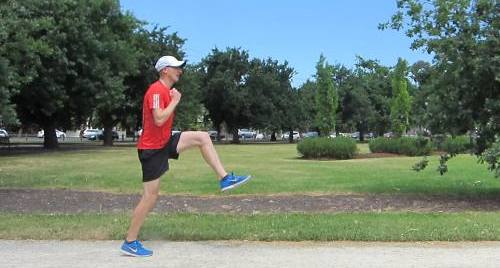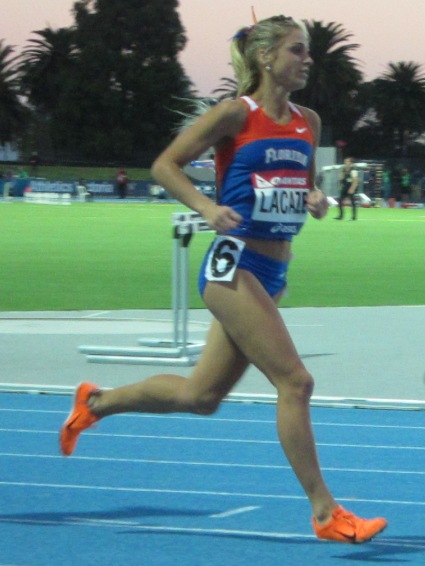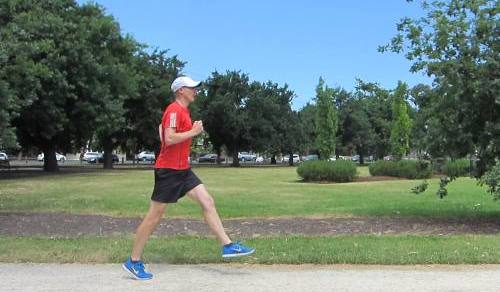
This exercise is the most difficult drill to master in this book and takes a high degree of coordination, strength and skill to execute it well. Keep in mind that you don’t need to perform this drill to get benefit out of the rest of the drills. Beginners and runners returning after a long break or injury should not attempt this drill. If you’re having trouble getting it right leave it for a few months and come back to it later when you’re feeling stronger and more confident.

Caution: Don’t do this exercise if you have a hamstring injury or soreness in the lower legs and feet.
Coordination and running. If you can complete this drill it will give you confidence that you can execute the full range of motion used by talented and faster runners. However translating the drill movement pattern into your faster running may still take time and practice.

Olympian Genevieve LaCaze
To get through this full range of movement in running you must also be strong - strong enough push the body forward in space for long enough for the full range of movement ahead of the body to take place.

How to:
1. Start out slowly and deliberately.
2. Lift and pull through the swing leg thigh up (engage hip flexors
and hamstrings).
3. As the thigh reaches horizontal and above allow the lower leg to
unfurl and the knee to straighten.
4. Engage the glutes and hamstrings to drive the leg down towards
the ground - this should be relatively hard so you make firm
contact with the ground.
5. Engage the foot and make double contact (the skip) on the
support leg.
6. Don’t slam the toes into the ground.
7. Engage the glutes and hamstrings as you contact (pressure down),
keep the leg relatively stiff and pop forwards.
8. Extend the hip and begin raising and pulling through the
opposite leg.
9. This gives you time to drive the swing leg forward and knee up
and extend the leg.
10. Drive with the arms to help the movement.

Tip: Don’t cut the hip extension phase short; drive down with the glutes and extend the lower back as you step forwards otherwise you may have trouble completing the lower leg extension (straightening) element of the drill before you contact the ground again.
Do: Two sets of 20 meters.
Warning: This exercise works the glutes and hamstrings hard as they are both engaged and the leg stiffened on contact - expect to get some soreness in the glutes and hamstrings. Do not do this exercise if you are injured or sore in any part of your body.
Try not to: Let your hip collapse. Keep your butt flexed and hips strong. Push through the forefoot and drive the torso ahead of the hips.
****